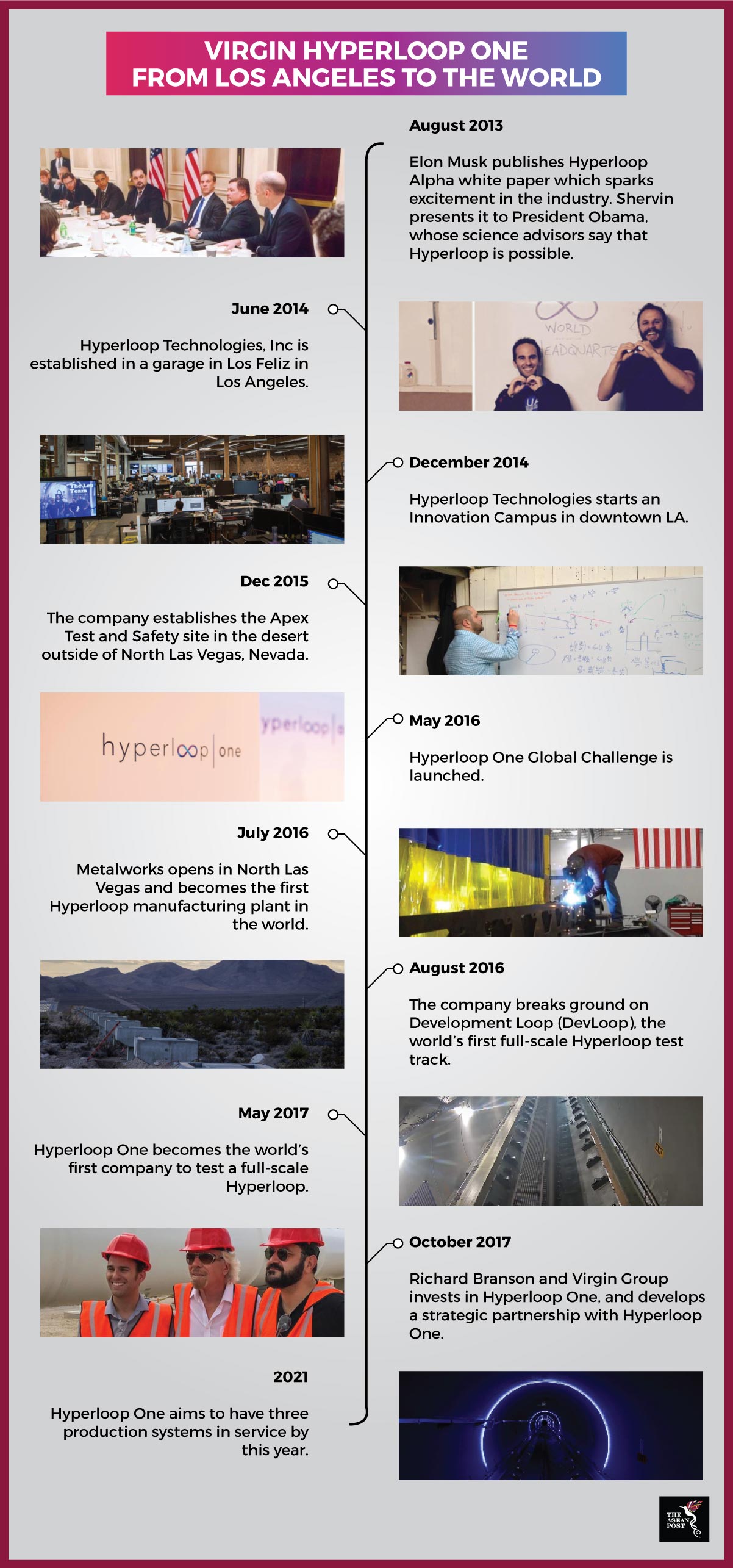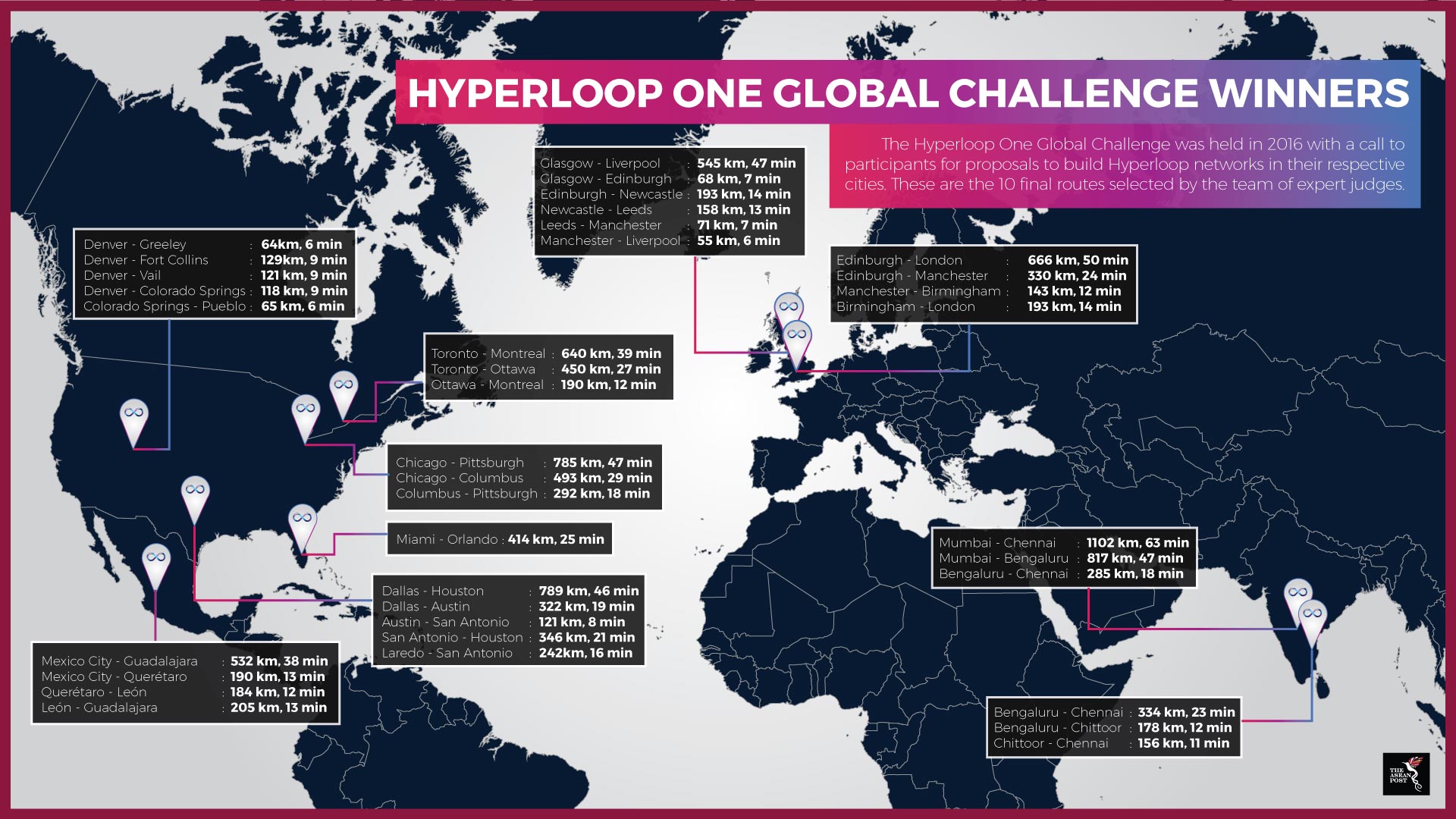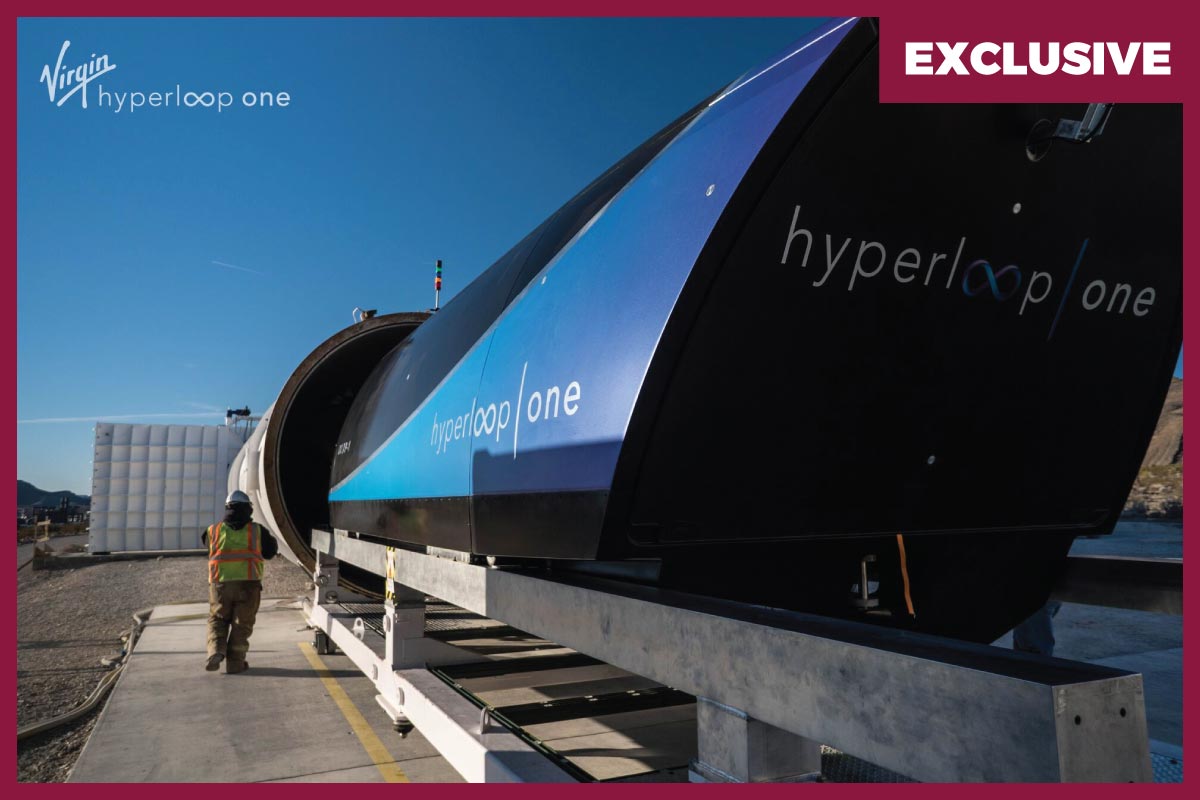Earlier this month, the Maharashtra government in India signed a Memorandum of Understanding with British billionaire and Virgin Hyperloop One chairman, Richard Branson to build a hyperloop between Mumbai and Pune.
The hyperloop system between Mumbai and Pune will be built by Virgin Hyperloop One and will cover a distance of 150 kilometres. With hyperloop, the journey will take only 25 minutes from Mumbai to Pune as opposed to the usual three-hour train journey or two-and-a-half-hour car ride.
The hyperloop is estimated to be able to travel at a speed of 1,080 kilometres per hour, three times faster than high-speed rail and 10 to 15 times faster than traditional rail. The trains will run using an “on demand” system as opposed to traditional train scheduling and will be energy efficient to boot.
“Hyperloop won’t just change how fast we get from point A to point B, it will completely change the way we live, work, and connect with those around us,” said YJ Fischer, Senior International Business Development Lead at Virgin Hyperloop.
The concept of hyperloop was first conceived by Space X founder Elon Musk. In 2012, Elon published a 57-page white paper outlining the technology and science that could make hyperloop possible. The white-paper was open-sourced and the public was encouraged to take his ideas and further develop them. Ever since then, several companies have picked up the mantle – among them being, Virgin Hyperloop One, Hyperloop Transportation Technologies, TransPod and Zeleros.
However, Virgin Hyperloop One is the only hyperloop company that’s making concrete developments in materializing the hyperloop dream. Founder Shervin Pishevar, a Silicon Valley investor, first discovered about hyperloop after discussing the idea with Elon Musk on a flight to Cuba for a humanitarian mission in January 2012. After Musk released the paper, Shervin established Hyperloop Technologies with Josh Giegel in a Los Angeles neighbourhood garage. In December 2015, the company established an Apex Test and Safety site in the desert of North Las Vegas, Nevada. In May 2016, the company announced that they were changing their name to Hyperloop One.
After completing their Series A fundraising, Shervin recruited Rob Lloyd, former president of American multinational tech conglomerate, Cisco Systems by texting him “…come change the world with me.”
At the end of 2017, Hyperloop One announced that Virgin boss Richard Branson will be a non-executive Chairman after his Virgin Group invested in the company.
Changing the world is exactly what they plan to do at Virgin Hyperloop One. Fischer told The ASEAN Post that Virgin Hyperloop One is “…building the first new mode of transportation in over 100 years” and will “…combine the speed of a plane with the capacity of a train and the convenience of a metro.” People have regarded hyperloop as the fifth great mode of transport, coming after the ship, the train, the car and the airplane.
The concept behind hyperloop involves sending specially designed pods through low-pressure tubes. The pods would float above the track through magnetic levitation (maglev) and glide at top speed due to ultra-low aerodynamic lag.
Departing from Elon Musk’s original concept laid down in his white paper, Virgin Hyperloop One will not use an air compressor as part of their system. In Musk’s paper, he used air hockey as an analogy to hyperloop, showing how air compressors would allow the pods to suspend in mid-air. However, according to Fischer, testing by their engineers revealed that it would take an enormous amount of power to compress air in a vacuum to fuel air bearings.
Reserving power is important for the engineers at Virgin Hyperloop One. Virgin Hyperloop One promises that it will require less power than high-speed rail and conventional trains. Unlike conventional trains where power is required for the entire track, hyperloop only requires energy for a portion of the track. In theory, hyperloop will be more environmentally friendly than conventional and high-speed trains.

Source: Virgin Hyperloop One
At the moment, Virgin Hyperloop One engineers are hard at work at DevLoop, the world’s only full- scale hyperloop test track, located in Las Vegas. Built by more than 150 Virgin Hyperloop One engineers, DevLoop is complete with a levitation system, propulsion, power and electronics systems, controls, vacuum structures, and an autonomous pod.
They’ve carried out over 200 test runs there and are working hard to meet their target of having a fully operational system by 2021. In one of their high-speed tests in December 2017, Virgin Hyperloop One recorded a new record-breaking speed of 240 miles per hour. While they’re still far from reaching their theoretical top-speed of 670 miles per hour, it shows that the company is making progress in terms of speed. Virgin Hyperloop One thinks that in order to achieve such high speeds, they would need an additional 2,000 metres of track.
However, even if Virgin Hyperloop One manages to reach their theoretical maximum speed, that would only mean that half the work was done. The larger obstacles would lie in the public implementation of such complex technologies.
Tech portal, The Verge, wrote in December 2017 that one of the biggest challenges for hyperloop is the ability to maintain a vacuum in the tubes carrying the pods – especially when the tubes can be hundreds of kilometres long. However, CEO of Virgin Hyperloop One, Rob Lloyd told tech mag Wired in January 2018 that the problem is “doable”.
Fischer pointed out that one of the biggest challenges is on the regulatory side.
“More than two-thirds of the hyperloop systems fit under existing regulatory standards – across aerospace, rail, and automotive but for the remaining third, we’ll need a new standard,” she said.
To overcome this, Virgin Hyperloop One has been working with governments and public institutions to figure out a way to implement their technologies in the real world. For example, Virgin Hyperloop One is working with the Royal Transport Authority in the United Arab Emirates (UAE) to devise a preliminary certification plan and roadmap.
If such developments bear fruit, the public implementation of hyperloop could change the world as we know it. As mentioned by Fischer earlier, it isn’t just about how fast one can get from point A to point B, but that it unlocks a whole range of other opportunities as well.
Not only is it cheaper and more energy efficient, it can also carry freight. Imagine if hyperloop was installed in Borneo where most places are usually inaccessible by road. A hyperloop system in Borneo would make transfer of goods and resources such as oil, agricultural products and so on more efficient. The local economy would be boosted and job opportunities will be created.
Richard Branson said during the announcement of the proposed hyperloop route from Pune to Mumbai, that the route could result in US$55 billion in “…socio-economic benefits, time savings, accident reduction and operational cost savings.”

Source: Virgin Hyperloop One
Aside from the planned implementation in UAE and Mumbai, Hyperloop One has also shortlisted 10 other routes for implementation. These routes include two routes in India, two in the United Kingdom, four in the United States, one in Mexico and one in Canada. The 10 routes are winners of the Hyperloop One Global Challenge that took place in May 2016, where more than 2,600 teams all over the world competed and proposed to have hyperloop implemented in their cities.
A hyperloop in Southeast Asia could redefine the region. The region known for some of the worst traffic jams could look completely different. The concept of commuting to work might also change too. Instead of someone living on the outskirts of Kuala Lumpur commuting to the city for work, they can instead opt to work in Singapore which would take only 30 minutes by hyperloop.
Travelling within the region would also be much easier. With hyperloop, you could reach Bangkok from Hanoi, a 1,321 kilometre journey, in under just two hours. It could also make the region much more fluid and vibrant as people of different cultures would constantly be interacting with each other.
Questions might arise about the cost of implementing such technologies or the cost of travel on hyperloop but Virgin Hyperloop One has pledged to make it as affordable as possible. Furthermore, Fischer says that estimates have shown that it could be as low as an American intercity bus ticket. Meanwhile, Lloyd says that the cost per mile of a two-way hyperloop track would be US$10 million, meaning that it will be cheaper than the high-speed rail between Kuala Lumpur and Singapore which is estimated to cost US$10 million per kilometer.
Everything about hyperloop might sound perfect – it’s cheaper, more environmentally friendly and faster – however, everything is merely speculation for now. There’s a possibility it might turn out completely different than what is expected but if Virgin Hyperloop One manages to stay on track and delivers on their promise of an energy efficient mode of ultra-speed transport, then the future cannot come any sooner.
